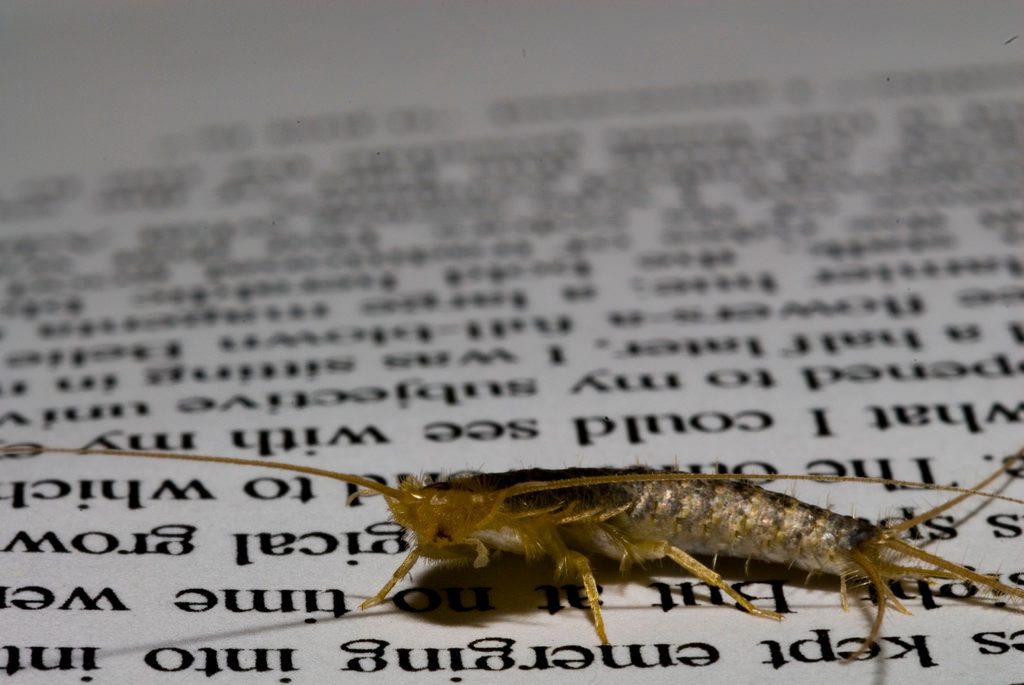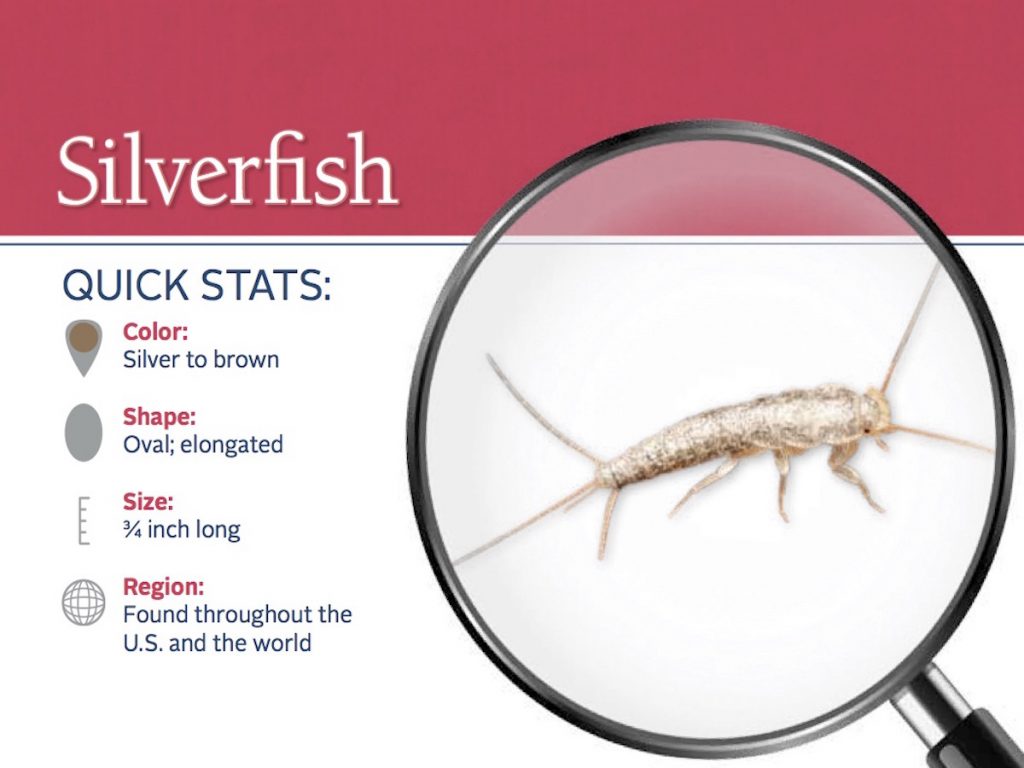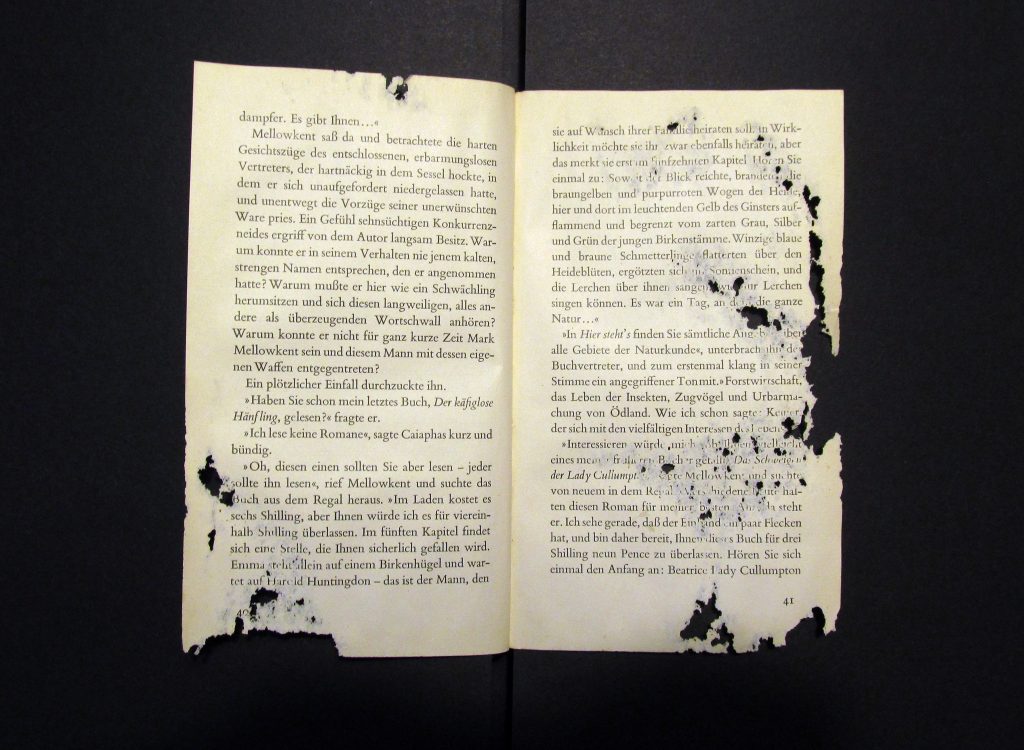Silverfish and How You Can Deal With Them
It is never pleasant to be unpacking a box full of decorations from the attic or even opening a drawer only to jump at the sight of silverfish. With winter season approaching, these pesky pests are going to continue to look for dark insulated places to settle and reproduce.

Description, Habits & Characteristics
Silverfish have a soft, scaly carrot-like body and long cerci (antennal-like structures on their rear ends). Their silver scales can easily rub off if you touch a body. Adults lack wings, and they have no metamorphosis. They are nocturnal and fully grown individuals can reach ¾ inch long.

Source: National Pest Management Association
Both immature and adult forms feed primarily upon carbohydrates and protein. They are also cannibalistic, feeding upon cast skins and dying or injured individuals.
They love flour, starch, cereal, glue, especially wallpaper glue, wheat flour, beef extract, paper products, cleansing tissue, cellophane, onion skin, carpets, furs, starched cuffs, lace, leather, dead insects, artificial silk, cotton, rayon and linen, but do not prefer wool, silk, unprinted or printed newsprint, cardboard, or brown wrapping paper.
They can also live outdoors in leaf litter. The majority of silverfish species can live up to 3 years.
These pests are common in almost every attic, but will generally stay within dark, protected areas under the insulation and behind the walls rather than come out into an air conditioned home. They usually remain nearby their food sources and can survive for long periods without food or water, but prefer dark moist wall voids.
Why You Should Be Concerned
Silverfish can nibble on the edges of many types of paper and paper products, glue in book bindings and on wallpaper. When infestations are heavy, paper products are often eaten through as if a light acid was irregularly sprayed onto the surface and had dissolved through.
Book bindings will have tiny irregular scrapings. Feces, if present, will be tiny black specks about 1/3 the size of drywood termite droppings, dry and loose. Tiny yellow stains, scales, and/or feces may be present on damaged items. When live adults are seen their soft wiggly bodies can annoy anyone not expecting the sudden encounter.
What You Can Do

If there are holes or notched edges on the pages in books, or yellow stains, silverfish are the most likely culprits.
To reduce silverfish indoors:
- Keep leaves outdoors and in gutters removed regularly.
- Box and tightly seal all papered items in storage to keep silverfish out.
- Keep paper items and wrappers to a minimum.
- Vacuum baseboards, especially in storage rooms, closets and water heater rooms.
- Make sure roof and wall leaks are repaired.
If you have a need for professional assistance with silverfish or other pest infestations, click here to contact us for a free, no obligation pest inspection!